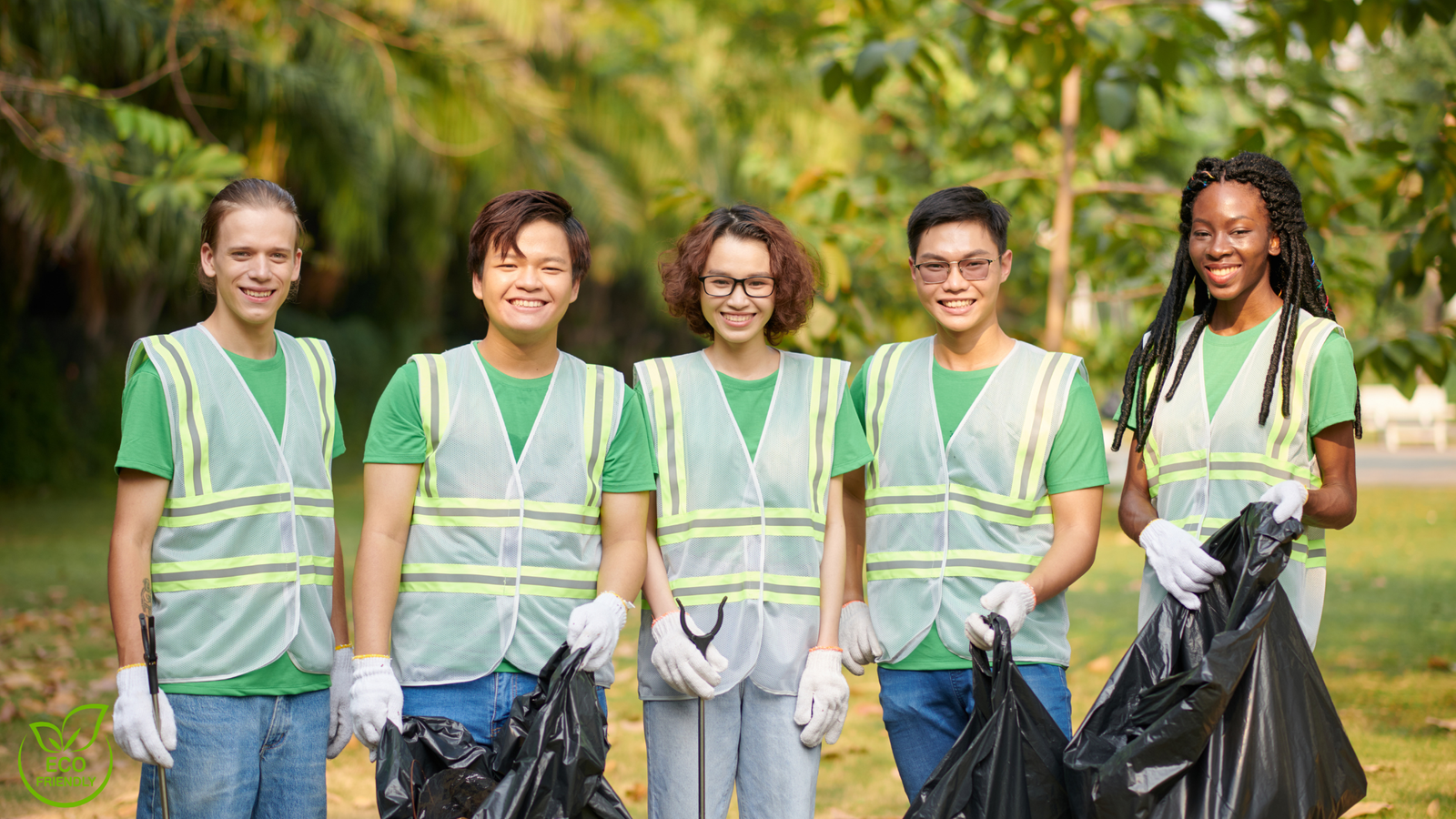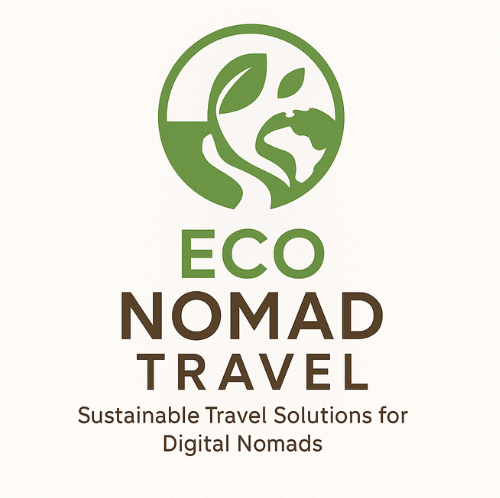Eco-Volunteering & Regenerative Travel: Hands-On Adventures for 2025
Discover how regenerative tourism and eco-volunteering projects are transforming the way travelers give back — from reforesting rainforests to restoring coral reefs. Learn how to participate responsibly and make your journey a force for renewal in 2025.

The world is moving beyond sightseeing. In 2025, more travelers are looking for purpose in their adventures — trading luxury resorts for local gardens, and selfie sticks for shovels. This shift, known as eco-volunteering and regenerative travel, blends exploration with environmental impact. It’s not just about seeing beautiful places, but helping restore them.
From Travel Differently to Eye of She, sustainable travel advocates agree: the future of tourism lies in giving back more than we take. Whether you join a rewilding project in Scotland or help protect sea turtles in Costa Rica, regenerative travel offers something both grounding and transformative.
What Exactly Is Regenerative Travel?
Unlike traditional “eco-friendly” tourism, which focuses on minimizing harm, regenerative travel aims to leave places better than before. It’s about active participation — planting trees, restoring coral reefs, or supporting local food systems — so that every journey contributes to the planet’s renewal.
According to sustainability researchers at the UN World Tourism Organization, regenerative tourism will define the next decade of conscious travel. As more communities open their doors to travelers who want to learn, help, and heal, the global travel economy becomes a tool for restoration instead of extraction.
Top Eco-Volunteering Projects to Join in 2025
Ready to roll up your sleeves? Here are a few hands-on initiatives welcoming volunteers worldwide:
- WWOOF (World Wide Opportunities on Organic Farms): Learn sustainable farming in exchange for room and board. Ideal for slow travelers and digital nomads seeking local immersion.
- Monarch Butterfly Biosphere Reserve, Mexico: Join conservationists protecting one of the world’s most remarkable migrations. Best time: November to March.
- Coral Gardeners, Tahiti: Help replant coral fragments and monitor reef health using AI and underwater drones.
- Rewilding Europe: Volunteer with wildlife corridors and forest restoration projects connecting species across the continent.
- Community Reforestation, Kenya: Partner with local women’s cooperatives growing seedlings for watershed protection.
Each program emphasizes community collaboration, education, and environmental regeneration — the three cornerstones of modern sustainable travel.
Practical Tips for Responsible Eco-Volunteering
Before packing your reusable bottle and gloves, it’s important to research your chosen program. The rise of “voluntourism” means not all projects are as ethical as they appear.
Look for organizations that:
- Work directly with local communities and avoid displacing jobs.
- Publish transparent financial and ecological impact reports.
- Prioritize education and skill exchange instead of short-term labor.
- Limit group sizes to reduce pressure on fragile ecosystems.
Use trusted platforms like Trip.com for verified eco-lodges, GetRentACar.com for fuel-efficient rentals, and Yesim or Airalo eSIMs to stay connected sustainably.
The Power of Community-Run Tourism
In places like Bali, Ecuador, and Tanzania, community-run eco-lodges are rewriting the story of tourism. Travelers stay with locals, eat from the same gardens, and share daily rituals that foster understanding instead of extraction. These models channel profits into schools, clean water systems, and small-scale agriculture — ensuring long-term benefits for everyone involved.
Explore our related guides on sustainable travel, eco-travel places 2025, and low-impact travel habits to build your next mindful itinerary.
The Future of Eco-Volunteering and Regenerative Tourism
The future of eco volunteering travel 2025 lies at the intersection of science, empathy, and community. AI-powered conservation tools are now mapping endangered habitats and predicting climate stress zones, allowing volunteers to contribute where help is needed most. Meanwhile, VR technology is giving travelers a preview of their positive impact — from watching tree cover grow to tracking revived coral ecosystems.
This data-driven empathy makes the experience deeply personal. When you see how your small effort contributes to planetary health, your journey becomes more than a trip — it becomes an act of stewardship.
Deep Dive: The Global Movement of Eco-Volunteering and Regenerative Travel
Across the globe, the meaning of travel is changing. The era of passive tourism is giving way to a new model built on reciprocity, reflection, and regeneration. The term eco-volunteering travel 2025 captures this evolution: travelers no longer view destinations as commodities but as living systems they can help nurture. Governments, NGOs, and small communities are now collaborating to create immersive projects that welcome global participants while safeguarding local autonomy. It’s a quiet revolution in how we think about time off — one where “vacation” transforms into vocation.
Consider initiatives like WWOOF, which has connected thousands of organic farmers with volunteers for decades. In 2025, its network has expanded to include eco-villages experimenting with permaculture and climate-resilient crops. Meanwhile, organizations such as Conservation International and local NGOs across Costa Rica and Indonesia use regenerative travel funds to restore mangrove forests, protect coral nurseries, and finance education for local youth. These collaborations illustrate that volunteering isn’t about “helping the poor”; it’s about building mutual learning ecosystems that thrive long after travelers go home.
Why Regenerative Travel Outranks “Sustainable” Tourism in 2025
While sustainability focuses on minimizing impact, regeneration is about adding value — socially, culturally, and ecologically. A regenerative traveler asks, “How can my presence heal this place?” rather than merely “How can I avoid harming it?” This mindset aligns with the green travel principles we advocate across Eco Nomad Travel: travel should enrich biodiversity, empower local voices, and educate every participant. From Nepal’s community homestays to Portugal’s forest restoration hubs, the message is the same — healing starts with humility.
Academics now refer to this trend as “transformative tourism.” Studies published by the UN Environment Programme highlight that travelers who engage in regenerative experiences develop stronger environmental ethics, report higher life satisfaction, and are more likely to donate or advocate for conservation later. In other words, regenerative travel doesn’t just restore landscapes — it restores people.
The Role of Technology in Ethical Travel
Technology, often seen as a threat to authenticity, can actually enhance ethical tourism when applied mindfully. AI-driven mapping tools now help organizations monitor forest recovery, while VR storytelling brings awareness to endangered ecosystems before travelers even pack their bags. In our post on AI and VR travel planning, we explored how these tools can deepen empathy rather than distract from it. Transparency is key — when travelers can visualize their contribution, they gain trust and emotional connection to the mission.
Data platforms like Trip.com now allow users to filter for eco-certified stays and track real-time carbon data. Even small innovations — like Yesim or Airalo eSIMs — reduce waste by eliminating disposable SIM cards. Combined, these shifts make responsible travel simpler, measurable, and accessible to everyone.
Slow Travel and the Return of Time
At the heart of regenerative tourism lies the philosophy of slow travel. Instead of racing through ten cities in a week, travelers settle into one place long enough to form genuine relationships and understand local rhythms. This approach mirrors the regenerative principle of “staying to sustain.” Volunteers who remain longer not only provide continuity for projects but also develop emotional bonds that inspire future advocacy.
Take the night trains of Europe, for example. They represent both low-carbon mobility and the joy of slowness — moving gently across landscapes, reflecting, reading, and connecting. The same spirit applies to volunteering: impact grows with patience. As more travelers embrace long-term stays, they rediscover the essence of journeying — curiosity, care, and contemplation.
Community Economics and Fair Exchange
True regeneration must also include economic justice. Many eco-lodges and community programs now implement profit-sharing models ensuring that tourism revenue funds local education, healthcare, and environmental protection. Platforms such as GetRentACar.com and Searadar highlight locally-owned operations and renewable-energy fleets. By choosing such partners, travelers actively redirect tourism dollars toward the people who protect these environments daily.
Moreover, regenerative travelers are redefining luxury. Comfort now means connection — a clean river, a full meal shared with locals, a quiet night sky unspoiled by light pollution. This perspective aligns with sustainable digital nomad lifestyles that value well-being and contribution over consumption.
Education, Empathy, and Long-Term Impact
Many eco-volunteering programs now integrate workshops on indigenous knowledge, biodiversity, and sustainable design. Volunteers don’t just plant trees — they learn why those trees matter ecologically and culturally. This fusion of education and action creates lasting awareness. Participants return home and influence their communities, spreading regenerative ethics through storytelling, art, or entrepreneurship.
In this way, regenerative travel builds a feedback loop of inspiration: a traveler becomes a volunteer, a volunteer becomes an advocate, and an advocate shapes policy. The ripple effect demonstrates how one trip can influence a lifetime of choices. For those new to this movement, start small — even a weekend helping at a local garden can shift perspective.
How to Vet Projects and Avoid Greenwashing
Unfortunately, as eco-travel grows, so do misleading claims. Before committing to any volunteer project, examine its structure. Does it prioritize local leadership? Are there transparent financial reports? Does it publish measurable environmental outcomes? Reputable initiatives often hold certifications from bodies such as GEN or Travelife. Avoid operations that charge high fees without disclosing where funds go — true regeneration thrives on transparency.
If you’re unsure, consult community reviews or connect with past participants on forums dedicated to ethical travel. Sharing firsthand experiences keeps the industry accountable and ensures new volunteers contribute to projects that genuinely make a difference.
Mental Well-Being and Purpose-Driven Journeys
Volunteering abroad often provides unexpected psychological benefits. Researchers at the Global Wellness Institute have found that purpose-driven travel reduces stress, improves emotional resilience, and fosters belonging. Many participants describe their experiences as “digital detox with direction.” They disconnect from screens and reconnect with tangible, meaningful tasks — sowing seeds, building classrooms, counting sea turtles under the stars.
This link between ecological restoration and mental restoration mirrors the philosophy of *The Power of Clarity*, a book from Mind Clarity Hub that explores mindful focus and presence. Both movements — mental clarity and regenerative travel — remind us that healing the planet and healing ourselves are intertwined journeys.
Final Reflection: A New Era of Travel Ethics
In 2025 and beyond, the question is no longer whether travel can be sustainable, but whether it can be restorative. Each traveler has the power to act as a catalyst for ecological and cultural renewal. The rise of eco-volunteering and regenerative travel signals a global re-education: a reminder that our journeys are not measured in miles, but in meaning. When every step restores rather than depletes, we truly become citizens of the Earth, not just visitors.
Every click supports sustainable tourism and local communities.
Frequently Asked Questions — Eco-Volunteering & Regenerative Travel
Getting Started with Eco-Volunteering
What is eco-volunteering?
Eco-volunteering involves participating in environmental or community projects during travel, such as reforestation, wildlife conservation, or local education initiatives.
How do I find legitimate programs?
Look for transparent organizations that publish clear impact data, have local partnerships, and are endorsed by trusted sustainability groups.
Do I need special skills?
Most programs welcome all skill levels. Enthusiasm, respect for local culture, and willingness to learn are the key requirements.
Can families volunteer together?
Yes — many projects offer family-friendly options like tree planting or community gardening suitable for all ages.
Ethics and Sustainability
How does regenerative travel differ from sustainable travel?
While sustainable travel minimizes harm, regenerative travel actively improves ecosystems and communities through restoration and participation.
Are all volunteer projects ethical?
No — avoid programs that exploit animals or communities. Choose certified or community-owned initiatives instead.
Can I combine volunteering with remote work?
Yes. Many digital nomads structure their schedules to contribute a few hours daily while maintaining freelance or remote jobs.
Does volunteering offset my carbon footprint?
It helps, but doesn’t erase emissions. Pair volunteering with low-impact transport like trains or shared electric vehicles for best results.
Planning Your Trip
When is the best time for eco-volunteering?
Most projects operate year-round, but check local seasons — for example, reforestation often peaks during rainy months.
Do volunteers need travel insurance?
Absolutely. Ensure your plan covers volunteer work, medical evacuation, and eco-adventure activities.
How long should I volunteer?
Stays of 2–6 weeks are most impactful. Longer commitments deepen cultural understanding and local trust.
Can I find eco-volunteering opportunities near me?
Yes — local parks, animal shelters, and conservation NGOs often accept short-term volunteers even without travel.
Global Impact and Future Outlook
What are the most popular regions for regenerative travel?
Latin America, Southeast Asia, and Europe lead in community-based conservation and eco-volunteering opportunities.
How can technology support volunteering?
AI mapping tools and mobile platforms help track impact, while VR tours let future volunteers preview real projects remotely.
Is regenerative travel affordable?
Yes — many programs offer accommodation and meals in exchange for work, reducing travel costs while increasing purpose.
Will eco-volunteering continue to grow?
Absolutely. As travelers prioritize ethics and sustainability, regenerative tourism is projected to be one of the fastest-growing niches in 2025 and beyond.
Preparing for a Meaningful Journey
How do I mentally prepare for volunteer travel?
Set clear intentions, research local customs, and embrace flexibility — every project has its own rhythm.
What personal growth can I expect?
Many volunteers report increased empathy, resilience, and awareness of global interdependence.
Are there remote or hybrid eco-volunteer options?
Yes — some organizations now offer virtual participation for data collection or language support from home.
Can regenerative travel help combat climate anxiety?
Yes. Taking tangible action in restoration projects offers a sense of agency and optimism about the planet’s future.
Traveler Stories & Local Voices
While data and impact metrics tell part of the story, the real proof of regenerative travel lies in lived experience. Volunteers and hosts around the world describe how eco-volunteering reshapes both perspective and purpose — one shared meal or reforested acre at a time.
“Before joining a rewilding project in Portugal, I thought sustainability was about buying eco products. After planting 3,000 native trees with local families, I realized it’s about relationships — with soil, people, and time.”
— Amara S., Eco Volunteer, 2025
Local community leaders echo that sentiment. In Kenya’s Aberdare region, reforestation cooperatives now employ dozens of residents year-round, funded entirely by regenerative travel programs. In the words of one organizer, “Tourists used to pass through. Now they stay, help us grow, and listen.” This shift — from consumption to collaboration — defines the moral core of eco volunteering travel 2025.
If you’ve ever questioned whether one traveler can make a difference, these communities offer a resounding yes. Each restored coral, each sprouting seedling, and each cultural exchange becomes a living story that rewrites what travel means in the modern age.
Share your own eco-volunteering story with Eco Nomad Travel — and help inspire the next wave of mindful explorers.
Further Reading — Sustainable Nomadism & Eco Adventures
Continue exploring conscious travel ideas and regenerative lifestyle tips from across the Eco Nomad Travel archive. Each of these guides complements the values behind eco volunteering travel 2025 and helps you plan future journeys that leave a positive trace.
- Sustainable Adventures: Your Guide to Eco Nomad Travel
- 10 Eco-Friendly Digital Nomad Destinations for 2025
- Zero Waste Digital Nomad Packing Guide
- Eco-Friendly Travel Kit 2025
- Sustainable Stays 2025: How to Avoid Greenwash
- Best Workation Cities 2025 — Travel Without a Car
- How to Book European Sleeper Trains in 2025
- Carbon Neutral Travel Guide 2025
Each of these posts expands your toolkit for sustainable exploration — blending low-impact travel habits, conscious planning, and ethical partnerships across the globe.
Affiliate Disclaimer: Eco Nomad Travel occasionally includes affiliate links to trusted travel partners such as Trip.com, Aviasales, Airalo, and Yesim. If you make a purchase through these links, we may earn a small commission — at no extra cost to you.
These partnerships help keep Eco Nomad Travel independent and ad-free, allowing us to continue publishing guides that promote sustainable travel, low-impact living, and regenerative exploration around the world. We only recommend tools and services we personally believe align with eco-friendly, ethical travel values.
For transparency, all affiliate links are clearly labeled and tagged with rel="nofollow sponsored" to comply with search engine and privacy standards.

